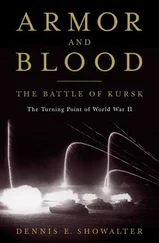What would war with Russia mean in military terms for Germany? Above all it entailed improving her Austrian connection. Helmuth von Moltke “the Younger,” nephew of the victor of 1866 and 1870, had succeeded Schlieffen as chief of the German general staff in 1906. He regarded the Austrian army as strong, its morale sound. But he was disturbed by the primary orientation of Austria’s current strategic plans against Italy and the Balkans rather than Russia. Prudence might temporarily suggest a cautious Russian foreign policy. Nevertheless the state of the Russian army by no means compelled inactivity, particularly should Russia’s entente partners join her in attacking the Central Powers. This seemed by far the most likely contingency, and by no means a pleasant one for a German army feeling itself so overcommitted it could not even provide troops to occupy Denmark should strategic or political decisions make it necessary. 17
Even more than the army, the German navy at this period insisted on the necessity of worst-case planning. Its attitude was reinforced by its undeniable inferiority to its designated major opponent, the Royal Navy. Fleet spokesmen did not shrink from reminding the kaiser himself that the principle of seeking decisive battle at the first favorable opportunity must not become an endorsement of suicide against a stronger enemy. It might be desirable if continental states agreed to fight their wars only on land, leaving their fleets in reserve to face the enemy that threatened them all, Perfidious Albion! But since this was a Utopian proposal the navy instead offered in March, 1909, a plan for cooperation with the army in the context of a general war. Its commitments were minimal, and oriented to the British threat. In the eastern theater German cruisers could make appearances in front of Russian ports. They could disrupt attempts to move troops and supplies by sea. They could stage mock landings to pin down Russian formations that would otherwise be available for an invasion of Germany. But even something as systematic as a blockade of the Russian coast was impossible in view of German naval weakness combined with the fact that many ships engaging in the Baltic trade possessed, or could easily obtain, neutral papers. 18
The navy did not stand alone in its pessimism. Even more than Schlieffen, Moltke was dubious about prospects of a major German offensive in the east. An increasing weight of intelligence information indicated that faced with such a deployment, Russian war plans provided for withdrawal from the exposed frontier. Even should the Russians prove obliging enough to stand and fight on the border, Moltke regarded a major German offensive against the swampy bottomlands and fortified crossings of the Niemen and Narew Rivers as folly. The Russians could easily compensate for any local defeat by continuing to withdraw eastward while building up their own forces for counterattack. Nor was Moltke’s reasoning based entirely on anxious readings of Caulaincourt. In 1904–05 the Russian army had blundered from disaster to disaster in Manchuria. But, Antaeuslike, it grew stronger with defeat. In terms of numbers and quality the Russians had arguably been more dangerous enemies after Mukden than before the Battle of the Yalu, particularly in the context of Japanese exhaustion. Foreign observers at the front, moreover, generally interpreted Russian deficiencies in terms of tactics, doctrine, and training—flaws that could be remedied with effort, as opposed to being inherent in the tsarist system.
Given the strenuous attempts the Russian army was making to assimilate the lessons of Manchuria, an eastern offensive seemed an increasingly risky option. The British military attaché was convinced that Russia in 1908 was “a most serious antagonist, and that a war against her would entail the greatest sacrifices of men and money.” Particularly on the defensive the Russian army “would render a good account of itself even against a combination of its Western neighbours… any material successes gained by the attackers would involve the greatest effort and sacrifices.” His American counterpart expressed similar opinions. 19
Logistics problems also influenced German attitudes towards operations in the east. Since the days of Waldersee, staff officers had increasingly doubted the possibility of supporting a major offensive into either Poland or Lithuania. Converting the Russian railways to German gauges would take time even if the task were not complicated by enemy demolitions. Forward of the railheads the standard German horse-drawn supply wagons were heavy enough to make bogging down a constant risk. Replacing them with smaller, lighter vehicles, whether purpose-built or impressed from the countryside, in turn meant increasing the length of the supply columns and absorbing men and horses who might be more profitably utilized in combat units.
Yet the very factors handicapping the German army in a major eastern offensive strengthened Moltke’s belief in the ability of relatively small forces to conduct a successful holding operation until relieved by troops from the western front. In contrast to the situation in Poland and Lithuania, the East Prussian road and railway networks were good enough to enable German units not merely to counter Russian moves, but to maintain the initiative locally. A general staff exercise for 1907 involved the defense of East Prussia in a two-front war by a force initially no stronger than two active corps, three reserve divisions, and some Landwehr brigades. In his evaluation Moltke, like Schlieffen, stressed the need of solving the problem offensively, concentrating first against one Russian army and then the other. Victory in the east, he argued, was possible even against markedly superior numbers. When asked by the admiralty staff whether he expected East Prussia to be cut off by amphibious operations, the chief of staff replied that by the time Russia could accomplish that feat, German operations in the interior would cancel it. 20
Placed in the context of German plans and German force structures, the confusing correspondence between Moltke and his Austrian counterpart, Conrad von Hötzendorf, in the first months of 1909 acquires a new dimension. Conrad, a man of strong character, unshakeable will, and limited insight, was determined at any cost to secure the greatest possible initial German commitment against Russia in any future war. He was particularly conscious of the new threats to Austria that he perceived emerging in Italy and the Balkans. What would be the German response should Russia wait until Austria was engaged somewhere in the southeast, then attack her in overwhelming force? To encourage Moltke to pay more attention to the east, Conrad proposed a major Austrian offensive against Russia, directed between the Bug and the Vistula. While mounting this operation depended heavily on Serbian inactivity and Romanian cooperation, Conrad insisted that even if Austria became unexpectedly involved in the Balkans she could have approximately thirty divisions available against Russia within three weeks of mobilization. The heart of Conrad’s argument, however, was his expressed hope for a strong and simultaneous German attack southeast, towards the Narew River. Failing that, Austria’s safest course would be to withdraw her deployment areas behind the San and Dniester rivers, resigning the initiative with all the risks this entailed.
Moltke’s quick response that Germany would not hesitate to support its ally by launching such an offense has puzzled soldiers and scholars ever since. He was certainly influenced by a desire to provide moral support for an Austria in the throes of the Bosnian Crisis. The exact nature of Conrad’s proposed German attack may also have shaped Moltke’s thinking. Neither general staff regarded direct cooperation between their main eastern armies as an immediate practical problem. The Polish salient worked against a united field command, much as the Ardennes salient was to do for the British and Americans in 1944. And instead of a Grosse Ostaufmarsch, the Austrian chief of staff initially suggested that the offensive against the Narew might be launched by as few as ten divisions—a number Moltke generously raised to thirteen. The latter figure was not arbitrary. In the 1907 exercise mentioned above, the Germans received a reinforcement of three active corps on mobilization. They were thus able to concentrate a dozen divisions against the Russians advancing from the Narew. This was hardly a force calculated to stagger the Russian Empire by itself. The most either chief of staff expected was that it would pin down nineteen or twenty enemy divisions. But should Austria respect Conrad’s commitment to a major offensive against Russia, this could be enough—just enough—to spell success in a high-risk environment. 21
Читать дальше












